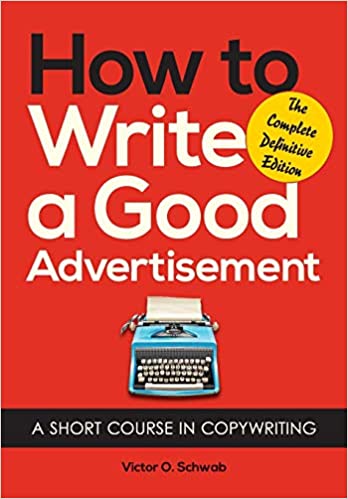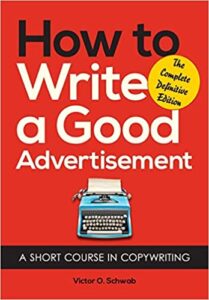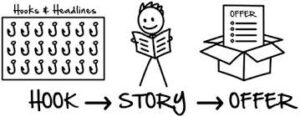“How To Write A Good Advertisement” by Victor O. Schwab is one of the all-time great books on copywriting.
First published in 1962, it has stood the test of time and the lessons contained within its pages are still relevant today.
Victor O. Schwab was the copywriter who created the title for the international best-selling book “How To Win Friends and Influence People” by Dale Carnegie.
With over 44 years of experience in the advertising industry, Schwab certainly knows his stuff, and he shares those nuggets of gold in this book.
Overview
The book explains the core elements of an effective ad.
Victor O. Schwab explains that there are five fundamental elements in the writing of a good advertisement:
1. Get attention
2. Show people an advantage
3. Prove it
4. Persuade people to grasp this advantage
5. Ask for action
With a chapter dedicated to each, he goes through each of these elements in depth and gives plenty of good and bad examples.
In addition to understanding those elements, this book will also teach you how to:
- Get attention
- Build credibility
- Create winning ad layouts
- Choose the best ad size
- Test ad effectiveness
- Convert inquiries to sales
- Make special offers that increase response and sales
There are 14 chapters, and the book is just over 200 pages.
List of chapters
Chapter 1: Get Attention
Chapter 2: Show People an Advantage
Chapter 3: Prove It
Chapter 4: Persuade People to Grasp This Advantage
Chapter 5: Ask for Action
Chapter 6: How Long Should the Copy Be?
Chapter 7: How to Get More Enquiries
Chapter 8: How to Size an Advertisement
Chapter 9: Do Copy Appeals Have a Sex?
Chapter 10: Fact or Fancies – Which Will You Feature?
Chapter 11: Fourteen Interesting and Instructive Split-Run Tests
Chapter 12: “Cumulative Effect” – A Common Alibi for Poor Advertising
Chapter 13: The Hard-Boiled Attitude – and How to Acquire It
Chapter 14: Random Observations
Some key points
There are plenty of great insights in this book. In addition to the five fundamental elements of an effective ad, Schwab shares some real advertising gems that he has gleaned through his almost 50-something years in the business.
You’ll learn about the sole purpose of a headline and the importance of writing good headlines. He talks about the importance of being specific in your headlines, especially in regard to numbers.
He gives 100 examples of real headlines and breaks down why they were effective and profitable. I found this section really insightful and of tremendous value – you’ll see examples of headlines that are still being used in some form today because the fundamental elements and reasons why they work still hold true. Schwab also talks about how long a headline should be, and the differences between taking a positive or negative approach in your copy.
You’ll learn how to lay out your copy and make effective use of imagery in your ads.
Schwab gives an interesting view of the psychology behind human desires. He teaches the reader how to tie these desires to our own products or services, and how to use these appeals in our ad copy to persuade people to take action. This is really powerful stuff and demonstrates Victor Schwab’s excellent understanding of how to use human psychology to produce effective advertising.
In addition to the “how to” content, the book also gives numerous examples to back up Schwab’s points, with both good and bad examples shown which are very helpful for the reader.
He talks about effective split-testing, how to increase/decrease the number of enquires from an ad, using coupons, and lists seven other elements that influence the effectiveness of an advert.
Conclusion
There’s so much valuable information in this one book it really is no surprise that it is still in popular demand over 50 years after it was first published.
The information is still relevant today and can be applied to digital marketing campaigns as well as traditional print advertising. It’s written in an easy-to-read style, with clear fonts and spacing, and is broken down in a logical and easy-to-follow sequence.
The chapter headings and sub-chapters are clear and easy to navigate, making this a book that you can dip in and out of whenever you are looking to refresh your memory on some of the ideas or get some inspiration for a new campaign. There is also a quiz at the end of each chapter so that you can test your understanding of the key principles taught in each.
If you are new to copywriting or are an experienced writer looking to brush up on your skills, I can highly recommend this book.





